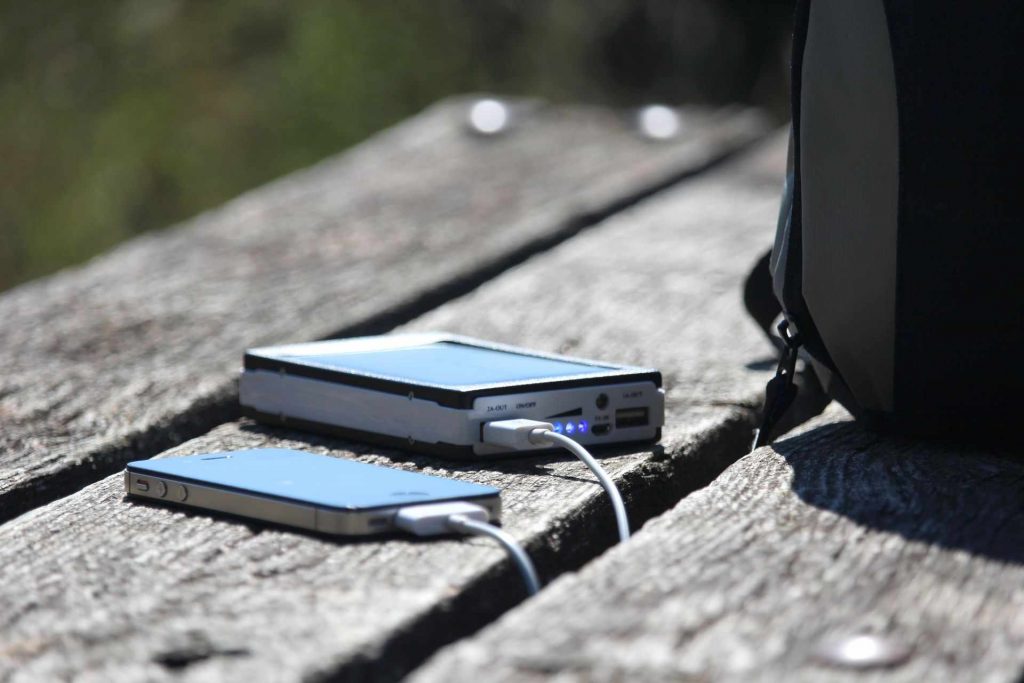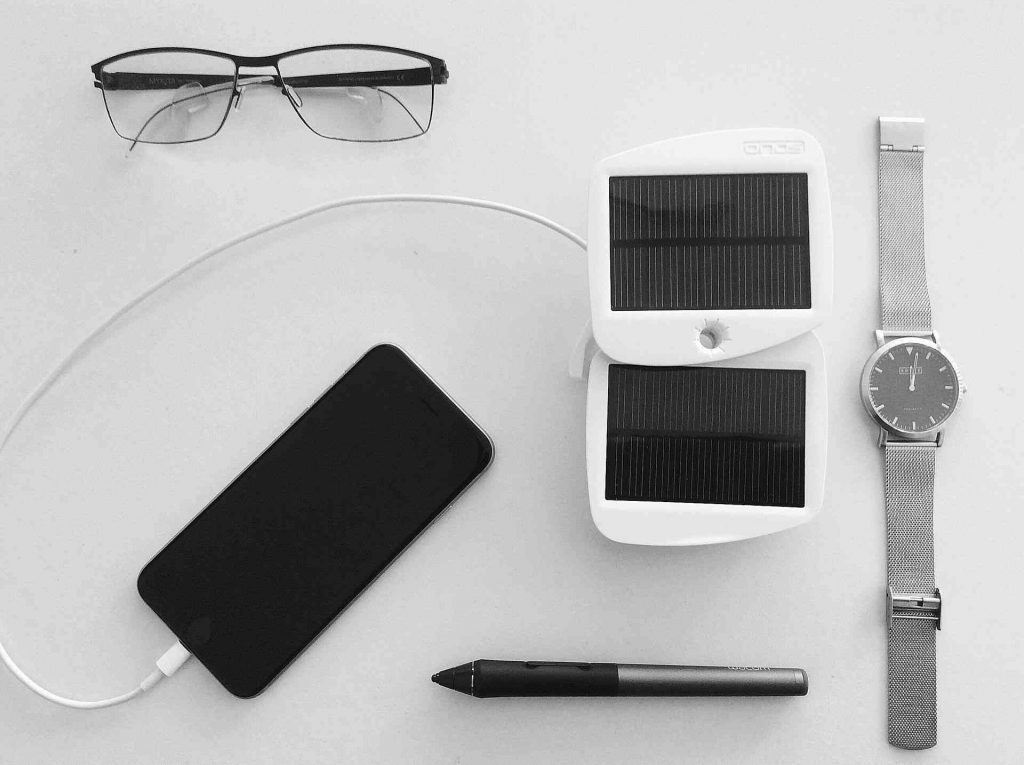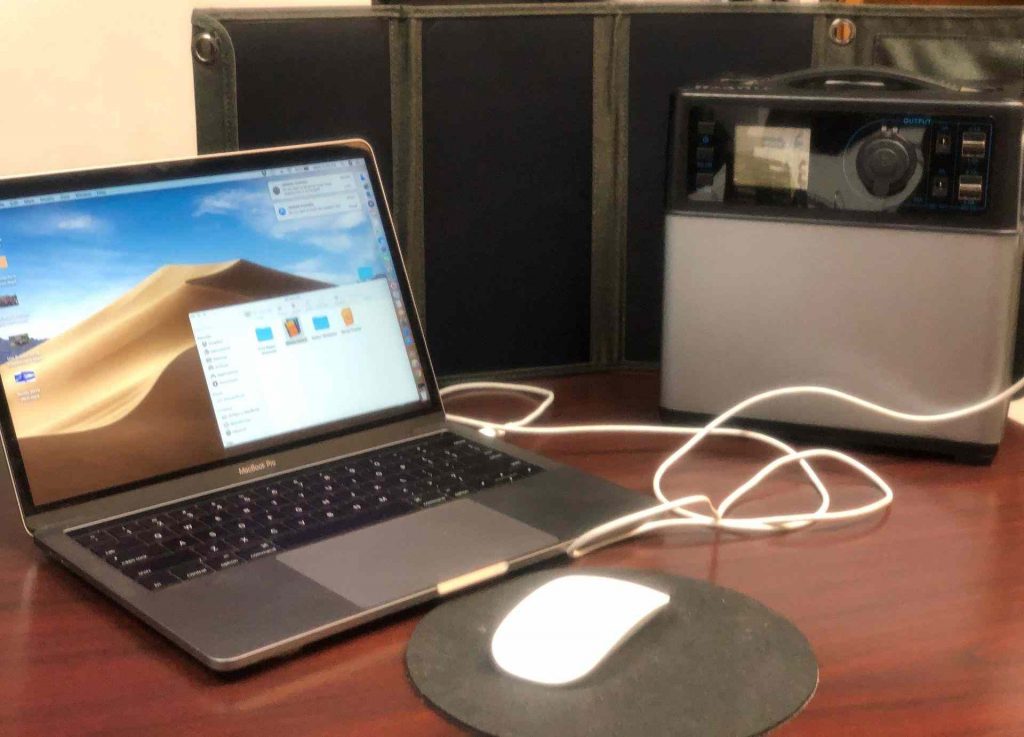Table of Contents
When the power goes out, one always needs a proper backup for power. Solar generators should be your primary go-to in such situations. They are very clean, don’t contribute to climate changes, are easy to use, and are also cheaper compared to gas-powered generators. The gas-powered generators. The latter is also known to emit smelly fumes whilst also being very loud.
Solar generators are particularly useful in emergencies where other fuel supplies are out of your reach to get hands-on. These devices capture the sun’s energy with their solar panels (usually sold separately) and then convert it into electrical power and store it in a battery for later use.

To purchase the best solar generator, the customer must filter out all the details like what estimate of the power would his house use in case of a power cut. He must figure out how much power his laptop, television, kitchen appliances and such would need in such emergencies. On the contrary, he must estimate how much power he will need if he is going camping or hunting or traveling in an RV for an adventure. An average laptop requires 50 to 80 watts per day, while a refrigerator may need 100 to 400 watts. These are some of the common items-power consumed numbers. You may want to look up how much power your appliances may need.
Now that you’ve estimated your watts, it is our responsibility to get you the most efficient appliance rather than an expensive one.
We have filtered out the best ones out for you with pros and cons along with the products so you know what is what. You may also have preferences like USB chargeable devices or devices with batteries. In this article, we will be discussing the 5 best solar generators in 2023:
Editor’s Picks: 3 Of The Best Portable Solar Generators In 2023
Table could not be displayed.5 Best Portable Solar Generators In 2023 Reviewed
1. Jackery Explorer 500
The Jackery Explorer 500 is probably the best solar generator on this list as we speak. It has a slick design and a good color combination that makes it look cool. But more importantly, it is very simple and user-friendly along with being lightweight and versatile. This model is particularly more efficient for customers who want to go camping but of course, it is also efficient with people who want backup power.
The Jackery Explorer 500 only weighs about 13 lbs and also has a stiff built-in carry handle, so it makes the customers easy to carry around for their adventures like hiking, camping or even traveling with an RV. The Explorer 500 has 3 USB outputs along with an AC wall slot to power your appliances, this makes it very easy for the customers to charge their mobile phones, laptops, tablets, and other few electronics.
This device also comes with an LCD screen that helps in displaying the real-time charging, discharging, other information like battery life percentage data. This in turn will help the customers in finding out how much backup they have and how much of it they can use in time. This device is very efficient for the price it asks.
- Has multiple outputs
- Can be charged via solar, AC, and DC.
- Comes with an LCD screen display
- Quite light in weight
- Not waterproof
2. EcoFlow Delta 1300
The EcoFlow Delta 1300 is another satisfactory solar generator that generates 1,300 watt-hours as the name intimates. This device also has a certain design to it that makes it look fashionable. An appliance you would certainly want to have if you are looking to spend big along with receiving the money’s worth.
The EcoFlow Delta 1300 has an absolute ton of range of outputs for the customers to use from. These outputs include 6 AC outlets, 2 USB-C ports, and also 4 regular USB ports. The Delta 1300 has a liquid crystal display, alongside an LCD screen, which allows the customer to always have an eye on the battery level alongside discharge/charge flow, thus making the product even more comfortable and user-friendly to use. Nevertheless, it has been said that the battery of this device deteriorates a bit faster than that of the previous model. It is believed that it falls to 60% after 800 cycles.
If you’re going to use your power source frequently, you should consider investing in some other durable powerful devices, but if you are looking for trips or camps, this device could be a game-changer for you.
- Attractive look
- Has an LCD screen
- Can power over 10 devices simultaneously
- Multiple connectivity options
- Slightly expensive
3. Renogy Lycan Powerbox
The Renogy Lycan Powerbox weighs about 55lbs, but it has wheels along with it so this should not influence your decision on not buying this device because the product may seem heavy. This device is best suited for customers who want the product to be used on long-term camping trips, outdoor events, or even as emergency power for their houses. The powerbox is extremely portable and convenient to use. The wheels in advance compliments all these situations.
The device comes in classic black and aqua blue lining in colors, which makes it have a sci-fi look. The product comes with a sturdy handle, easily adjustable legs, and a protective casing. Apart from these, the Lycan has plenty of outputs attached to its devices. This product has 4 AC slots and 4 USB slots.
In addition to these, the Lycan powerbox also has a floodlight, which is a critical factor when the lights go out at night time. The device also has AC and DC output buttons that allow easy switching between the two output modes. The battery is set at 1200 watts, which may sound a bit underwhelming for this beast, but the batteries are replaceable so it should not be a major issue for the clients to be in a fix.
- Extremely durable
- Multiple connectivity options
- Comes with an inbuilt floodlight
- Built-in wheels make portability quite easy
- Battery power could have been better
4. Jackery Explorer 1000
The bigger brother to the Explorer 500, the Jackery Explorer 1000 is deemed to be the best solar generator for campers and adventurers who crave that extra bit of the power for their trips. The Jackery Explorer 1000 almost looks similar to the Explorer 500 in terms of color, i.e, Orange and grey-ish but has much more to offer. It also has a liquid crystal display that shows everything you will need to know about the charging and discharging.
The Jackery Explorer 1000 comes with 3 AC outputs, 2 regular USB outputs, and 2 USB type C ports. Given this information, you should understand that this device can charge a lot of devices ranging from laptops, tablets, to smartphones. In addition to these ports, the product also has a quick charging USB port which has served very well to the customers when they were in a hurry on various happenings. The device charges completely in about 8-10 hours under good conditions.
The portability is a little lower compared to the Explorer 500 as this one weighs around 22 lbs, but this portable solar generator could be heaven for all the campers in the world as it provides that extra it factor.
- Charges from 0 to 100 in 8 hours
- Quite powerful
- Has 3 AC outputs and 4 USB outputs
- Comes with an LCD display
- A little heavy
5. Goal Zero Yeti 1000
The Goal Zero Yeti is deemed expensive by a few of the customers. Alongside that, they have also mentioned that the weight is a bit off the scale to what they were looking for. Despite these issues, we encourage you to give this product a try if you fancy it because it also has some redeeming qualities. The device has a digital display stuck on it that tells the people the approximate estimate of how many hours are left until the battery completely drains out. The digital display is huge and clear that it allows you to have a look at the Yeti from further distances and let you know the amount of time you have left.
The product comes in black color and has avocado green outlines around it, a bit stylish. The product comes in very handy however it has its drawbacks like no having a DC input option and it also does not have many accessories that come along with other products. For example, if the customer wanted the Anderson Pole connectors, they will need to buy them separately.
For the money they ask, this is not much quality that a camper may want to invest in, it’s a bit greedy. It weighs around 40 lbs and is kind of “just” portable to be used around.
- Attractive look
- 3000 W surge
- Can charge phones, tablets, laptops, cameras, and most small devices
- Has 3 USB ports
- No DC charging option
What Is A Solar Generator?
According to Jacob Marsh, a “solar generator” usually refers to a portable solar-powered generator that can be used as a backup power source for power cuts, camping, RVs, or an eco-friendly off-the-grid lifestyle. As previously mentioned, we encourage you to buy a solar generator over gas generators because they are much cleaner, and much safer, unlike gas generators, they don’t use fossil fuels or emit harmful fumes.

Solar generators use solar panel expansion kits to take in energy from the sun, which is then stored in the battery of the unit. However, most of the solar generators can also be charged up through AC or DC power through a wall outlet or DC car cigarette charger slot. Almost all the devices these days have that capability these days with improved technology.
These solar-powered generators come in various sizes, styles, wattages, and battery capacities and each of these qualities should ultimately bias your next buy of a solar generator as per your convenience.
For example, a solar-powered generator designed for camping trips is likely to be small, around 500W or less, and features wheels on the sides to make it easier to drag around.
On the other hand, a portable solar generator designed for emergency power cuts in the home is probably larger, around 1500W or more, and heavier because weight is less of an issue.
Features common in solar generators include:
- AC outlets
- USB port
- LCD screen
- Built-in LED low-power flashlight
- MPPT charge controller
- Pure sine wave inverter
- Battery management system
- Carry handles
Solar generators tend to be much easier to carry around than traditional gas generators because of the handles and the wheels around them — they’re also a lot quieter and don’t produce any fumes, so you can charge your devices in the same room/tent as a portable solar generator and never hear a thing.
How Do Solar Generators Work?
A solar-powered generator can be run by three different— battery, charge controller, inverter.
The battery reserves the energy that is captured. This energy may be captured from the sun through the solar panels or it may come from grid electricity through a wall slot if your solar generator has AC charging capacity. Some solar generators also have the feature of being charged by DC ports — the car “cigarette charger” ports.
The charge controller helps the customer in protecting the battery from overcharging. Batteries are rated for how much power and voltage they can handle before they will become damaged.
An inverter’s job is to change the low-current DC power from the battery into AC power as the same mechanism as to what comes out of your wall outlets at home. This means that your portable solar generator will help you in running back a TV, fridge, smartphone charger, and other household appliances when there is a power cut.
Things To Consider Before Buying A Solar Generator
How Much Power Do You Need?
As good as these devices are for camping, hiking, RVs and as a backup for your houses when the lights go out, you must keep in mind that these little devices cannot run your whole houses and so you must estimate the power you will need and then finally buy a power station of a suitable size.
Do You Need It To Be Portable?
If you’re going to be carrying it around on hikes or camping trips, or an adventure, make sure that your device is portable, i.e, the device is lightweight or has a handle. Some of the devices on our list have wheels as well.
Lead-acid Battery Or Lithium-ion Battery?
While lead-acid batteries are much cheaper than lithium-ion batteries, that’s the only upside. You must go with the thumb rule of the more you spend, the more efficient it gets.
Lithium batteries are better across several aspects:
- You can drain them by 85% without damaging them, this is only 50% with lead-acid
- Lithium-ion batteries are 95% efficient, lead-acid is around 80-85% efficient
- A lithium battery has a longer lifespan than that of lead-acid
While they’re more expensive, a lithium battery is more efficient for using and we recommend you to use them more.
Waterproof Electronics
We want you to avoid non-waterproof devices if you could. Whether it’s the solar panels or the portable power station, You should always make sure that your device parts are completely waterproof and weatherproof.
You don’t wanna leave your solar kit out in the sun, only for it to rain and get ruined.
- Brand:
When choosing a solar generator, it is always positive to look at the brand. The well-known trending brand tends to be more durable and affordable than the new ones. It is, therefore, important for customers to purchase from someone who has a reputed name in the market. However, you should not only base your argument on one brand, but other key features could also be more convenient to your comfort, so this helps you slim your options thinner to a brand or two.
Why do you need one?
We all use solar-powered generators for different reasons – So it may depend on you entirely why you may want a solar generator, this will help you in deciding if the model should be big or small to satisfy your needs.
Some of the reasons people buy portable solar generators include:
- Emergency backup power
- Power outages
- Off-the-grid lifestyle
- More eco-friendly source of power
- Camping
- Jumpstarting a car battery
- RV, cabin, boat power source

Portability
When you’re looking to choose the best solar generator, you must consider its weight which will ultimately tell you how much of a portable device it is. If you’re looking for something common like to power your home TV in a power cut, then in these situations the design and weight should not influence your decision on deciding between various models so long as you can move it around your home safely. However, on the contrary, if you’re looking for a portable solar generator that you would like to take on camps or hiking, then that rechargeable battery should ideally be light as a feather and there should be a carry handle to help or even the devices could have wheels for easy transport. The bigger your solar generator, the heavier it will usually be. Keeping this in mind you should decide on what type of solar generator you will be needing, for normal household cases, or the adventurous ones.
Maintenance
Solar panels and the components that make up the average solar generator require very little maintenance. There are no moving parts so the odds of something falling within the system are slim. We recommend inspecting the solar panels every few months to see if they require cleaning and to remove any debris that may have collected on them. The batteries should be checked periodically for degradation if you are constantly drawing them down to close to empty. This process is typically very simple and can be performed by simply checking the battery voltage and performance statistics listed on the system’s LCD screen.
Frequently Asked Questions (FAQs)
Q. What is a solar generator?
A solar generator is a system that captures natural solar energy from the sun during the daytime via photovoltaic (PV) panels and then converts this energy into usable solar electricity via an electric power transmission system. All the harvested energy gets stored in a battery bank in which to be used as and when needed. Once set up, solar generators power up automatically when power from the grid fails or you can also switch them on manually if need be
Q. What makes up a solar generator?
They’re relatively simple objects that are made up of very few components:
1. A power pack or high capacity battery
2. An inverter that converts the sunlight’s energy/direct current (DC) to alternating current (AC)
3. A voltmeter to let you know how much power is being produced and how much is being stored at any one time
4. Either an AC or USB output depending on the size of the unit
Q. What size do I need?
Deciding what size solar generator you need will depend on what you’re going to use it for. Will it be used at home just in emergencies? Will it be used to go on camping trips? Will it be used as an at-home standby device that’s plugged into your mains? Once you’ve decided on this, then you need to think about what appliances you need to run during these times. Just to give you some idea, a small/mid-size solar generator that’s around 3,000 to 4,000 watts can power the following:
1.TV (200 watts)
2. Microwave (1,500 watts)
3. Refrigerator (600 watts)
4. Sump pump (600 watts)
5. Several lights (600 watts)
Q. Is there anything else I need to consider before buying a solar generator?
A solar generator needs to harness energy from the sun before it will work and you need to make sure there’s sufficient space in which to put your panels for them to be efficient. The only other advice we can give you when shopping for a good solar generator is always to buy from a reputable source and be careful if you are planning on installing it yourself.
Q. Why should I opt for a solar generator over a gas generator?
There are many reasons why a solar generator is much more beneficial than a gas generator. Solar generators are silent; they don’t produce any fumes or odors, refueling doesn’t cost a penny, there are no flammable liquids to store, and they’re easy to operate. By comparison, gas generators are noisy, smell strongly of gas, you have to keep buying fuel for them, and you have to find somewhere safe to then store that fuel.
Q. I live in an apartment. So are solar generators completely out of the question for me?
No. Solar power has come a long way over the past few years and is becoming more accessible to everyone. There is no longer a need to have huge amounts of space or own your own home. More and more people today are using solar equipment while living in apartments. Solar generators are perfectly safe to be used indoors as they produce no fumes and the solar panels can easily be arranged in a window or balcony.
Q. Are there different types of solar generators?
There are two general types of solar energy generators: there’s a portable version and there’s one that stays at home. A portable solar generator is ideal for use while camping or traveling. They can easily be moved from place to place and are cheaper to buy initially than a stay at the home generator. If all you need to power is the equipment you take camping or while on the move, it’s ideal. If you’re looking to use the generator more in times of emergencies or maybe as a backup power supply you’re much better off sticking with a home solar generator.
Q. Can I store a Solar Generator indoors?
The majority of solar generators should be stored indoors. Batteries are susceptible to extreme cold and hot temperatures and can hurt performance. However, we highly recommend checking the operating temperature recommendations on the solar generator you are using for optimal performance and location.
Q. Can a solar generator power a house?
Answer: No, a solar generator cannot power a house. The unit may be able to temporarily power certain household appliances (like your TV unit) and handheld items like power tools, but you cannot expect a solar generator to power everything long-term. It will run out of energy before it can keep up.
As solar technology continues to grow and become more efficient, more and more people will look for education on the subject. We hope the FAQ Series is providing our readers with the information they require to make a proper purchase when going green.
A Final Word
Solar generators are the best tool you might want to get your hands on when the power in your house runs out more frequently than often. It is also the best medium to have when you go outside on trips, camping, or sometimes even hiking. These devices help you restore your batteries of smartphones, tablets, laptops, refrigerators, and much more appliances. Think of this as a backup to deal with problems when the power runs out or is not sufficient. Solar generators should always be your primary answer to such situations because they are very clean and more importantly do not contribute to any climate changes. Apart from that, the solar generators are very portable, easy to use, and much affordable over time now.
We encourage you to buy these devices over the gas-powered generators who are in contrast very loud and you may often get disturbed by their devices. We as a team, have researched all the solar generators in this list and narrowed it down to the best 5 solar generators in the market at the moment which will help you better in your experiences.
On an ending note, we personally recommend you to buy:
It has 3 USB outputs along with an AC wall slot to power your appliances, this makes it very easy for the customers to charge their mobile phones, laptops, tablets, and other electronic items. It is also quite durable and attractive looking.
Last update on 2023-12-18 / Affiliate links / Images from Amazon Product Advertising API

